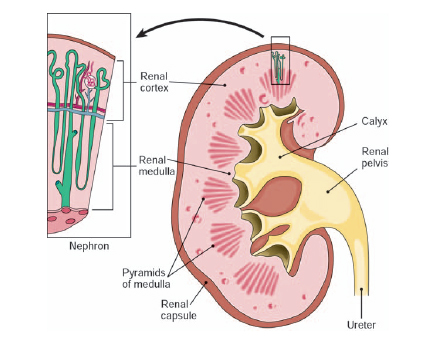Urinary SystemKidneys |
What are the major parts of the nephron? |
The major parts of the nephron are the renal corpuscle, the proximal convoluted tubule, the loop of Henle, and the distal convoluted tubule. Each part has a significant, distinct function in urine production. Inside the renal corpuscle is a tangled network of about 50 capillaries, the glomerulus, where filtration occurs. The blood pressure within the capillaries forces water and dissolved substances out of the capillaries and into the renal tubule.
The proximal convoluted tubule starts at the glomerulus and continues into the loop of Henle. About 65 percent of the original filtrate is reabsorbed in the proximal convoluted tubule. The loop of Henle is a critical region where the filtrate is further adjusted for water and solute balance. The distal convoluted tubule removes additional water from the filtrate, until the final concentration of the urine is approximately equal to that of the body fluids.

